
We drove around in an old Pontiac…towing a one-wheel trailer. We weren’t itinerant: It wasn’t The Grapes of Wrath, but it wasn’t uptown either. It gives you a sort of conservative background, being raised in an era when everything was scarce. (Source: Rolling Stones)
The whole romance of [Dirty Harry] is the fact that he’s a guy who hates bureaucracy. Well, who doesn’t hate bureaucracy? You go to the [DMV and] fill out form after form. That’s part of the bureaucratic nightmare that mankind has made. (Source: Psychology Today)
I was telling stories on the piano long before I ever directed a movie. I like the image of the piano player: The piano player sits down, plays, tells his story, and then gets up and leaves, letting the music speak for itself. (Source: snappermusic.com)
This picture [American Sniper] was interesting because I’m seeing it from the point of a person who was sort of an American hero. His family and his beliefs were very strong. You have to embrace his philosophy if you’re going to tell a story about him. (Source: Toronto Star)
There’s a rebel lying deep in my soul. Anytime anybody tells me the trend is such and such, I go the opposite direction. I hate the idea of trends. I hate imitation. I have a reverence for individuality. (Source: Wild Open Spaces)
When [my old films are on TV]…I slide slowly under the table in embarrassment. I cringe at having these huge heads of hair, big sideburns, and wearing some terrible bell-bottom pants. (Source: Woman and Home)
Extremism is so easy. You’ve got your position, and that’s it. It doesn’t take much thought. And when you go far enough to the right, you meet the same idiots coming around from the left. (Source: TIME)
Man becomes his most creative during war. Look at the amount of weaponry that was made in four short years of World War II. But that’s kind of a sad statement on mankind. (Source: Wall Street Journal)
My father died very suddenly at 63. For a long time afterward, I’d ask myself, Why didn’t I ask him to play golf more? Why didn’t I spend more time with him? There’s nothing you can do about it. So you just forge on. (Source: Esquire)
It’s too late for vanity. If I was 30, maybe, I’d say, “Hey, that’s not a good angle.” But there is no good angle now. (Source: The Guardian)
The stronger the participation of the female characters, the better the movie. They knew that in the old days, when women stars were equally as important as men. Hepburn, Davis, Colbert: They had great faces and great voices. (Source: rogerebert.com)
I’ve always felt that if I examine myself too much, I’ll find out what I know and don’t know, and I’ll burst the bubble. I’ve gotten so lucky relying on my animal instincts, I’d rather keep a little bit of the animal alive. (Source: Esquire)
I’m Joe Citizen. I’m a moviemaker, but I have the same feelings as the average guy out there. (Source: Carmel Pinecone)
Check out The Most Popular Movie the Year You Were Born.
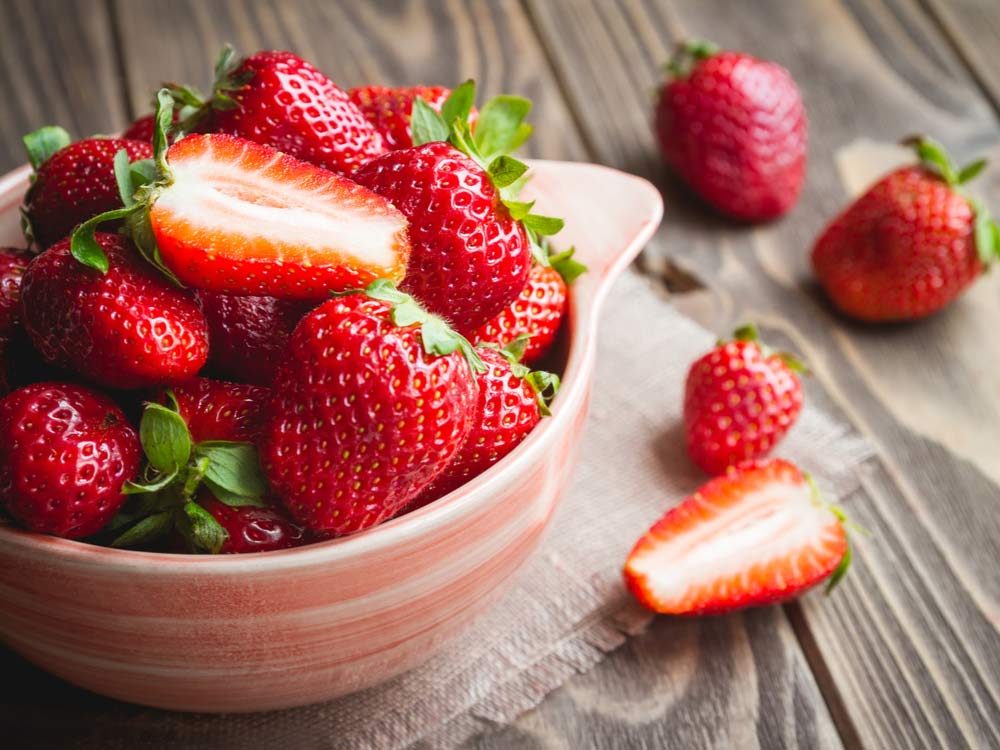
The secret to making your strawberries last longer
‘Tis the (strawberry) season! That’s right, folks—summer has arrived, which means we now have an excuse to chow on those red delights for every meal, like, ever.
And why not? They’re the best guilt-free snack, after all. These tasty berries are jam-packed with antioxidants, vitamin C, potassium, fibre, and magnesium. All of those vitamins and minerals have loads of benefits, too, including improving eyesight, reducing high blood pressure, boosting the immune system, and preventing certain cancers and cardiovascular diseases. (Plus, these aphrodisiac wonders can even spark a bit of romance.) And the list doesn’t stop there.
There’s only one downside to these sweet treats. Strawberries spoil quickly, which is as annoying as it is a waste. Nobody wants to find their strawberries growing mushy and moldy in the fridge after purchasing them only a few days earlier. What is a strawberry lover to do?
Thanks to Hip2Save, an online coupon website, we have the perfect hack for keeping your strawberries fresh way longer. All you need is a bit of vinegar, water and a colander or salad spinner.
To start off, pour about ½ cup of white vinegar and 2 ½ cups of water into a large bowl, and soak your berries in the mixture for a few minutes. The vinegar will get rid of mold spores and bacteria, which make your strawberries spoil quicker. (And don’t worry—your strawberries won’t taste like vinegar afterward!)
To thoroughly dry the strawberries, place some paper towels in a salad spinner or let them air dry in a colander. Be sure to remove all of the moisture, since that will prevent them from getting moldy. Then, you can safely place them in the refrigerator on top of a paper towel. Voila! You now have fresh strawberries to last for days and days. Plus, this method works for blackberries and raspberries, too!
If that still doesn’t do the trick, The Kitchn recommends keeping the stems of your strawberries on for as long as possible in order to extend their shelf life. And if you notice any spoiled or moldy berries in your bunch, remove them ASAP to prevent the mold from spreading to the rest.
Ready to dig in? Try your extra-fresh strawberries along with these healthy breakfast bowl hacks.
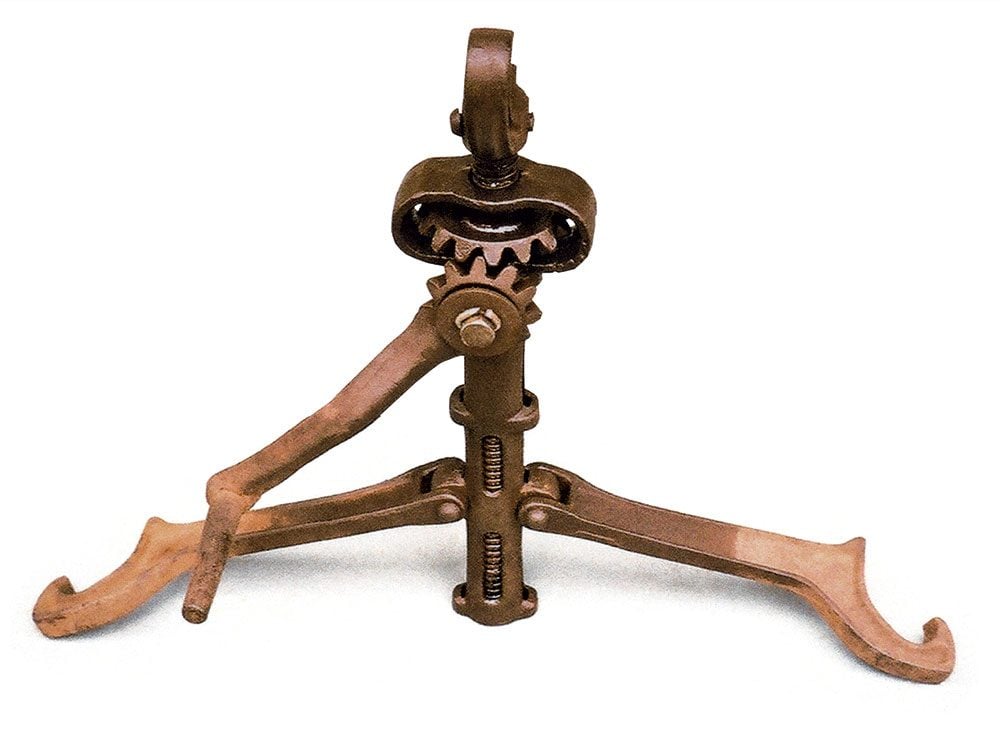
Mystery Object of the Month: What Is It?
Bruno Pavan of Grand Forks, British Columbia, writes, “This item was found here in rural Grand Forks. It measures 12 inches in height (30 inches when fully extended) and 18 inches across when the legs are extended out to the side. I hope someone can tell me what it is!”
What do you think? Can you help solve this mystery?
Share your answers in the comments below or by sending them in through Our Canada’s submissions site (please identify it as an entry for “What Is It?”).
Challenge yourself to more “What Is It?” mysteries!
Don’t miss out on the best original Canadian photography—sign up for the Our Canada newsletter.

First of all, get tested if you’re over age 50 or your doctor recommends it sooner. Colonoscopy is the most widely used screening test for colon cancer, which is second most commonly diagnosed cancer in Canada. On average, 25 Canadians will die of colorectal cancer every day. Colon cancer almost always begins as abnormal growths called polyps, which can be detected and removed during a colonoscopy, dramatically lowering your risk of developing the disease. And yet, many Canadians ignore this straightforward way to monitor their health and lower their cancer risk.
Two of us—Jim Sears, MD, and Travis Stork, MD—recently underwent colonoscopies on the air. So we grilled experts for advice on everything from choosing a doctor to gulping down the prep. Here’s what we want you to know about our experience.
“It’s no worse than a visit to the dentist”
“I’ve had three colonoscopies,” says Dr. Sears. “After each one, I wake up and think, You know, that wasn’t so bad. The worst part is just booking the appointment. Even the notoriously dreaded prep—drinking certain fluids or taking pills to flush out your system so your doctor can see every nook and cranny of your colon—feels kind of like a cleanse. It’s a day of not putting junk into your gut.”
“You feel fine? That’s the perfect time to be tested”
The logic among many patients goes, “I’m OK. Why should I have this procedure?” says Anish Sheth, MD, attending physician at the University Medical Center at Princeton in New Jersey. “But it’s most important [to have a colonoscopy] to find polyps before they turn cancerous.”
“Ask two key questions”
Not all doctors perform colonoscopies equally well. A less-than-thorough procedure may miss polyps or lead to complications like a tear in the bowel. Ask the doc about his “adenoma detection rate”—the percentage of patients in whom he finds precancerous polyps. This metric isn’t universally adopted, and many doctors may not know. (An ideal number is at least 15 per cent for women and at least 25 per cent for men.) If the doctor doesn’t know his rate, ask how many procedures he performs each day. You don’t necessarily want to choose someone who does just one, but a physician who does 20 may be prone to fatigue or be rushing through them.
“Split your prep time”
Taking half of the preparation the evening before and half the morning of the procedure is becoming more common, says Harry Sarles, MD, president of the American College of Gastroenterology. (With this type of prep, you typically need to take only one day off from work.) Research shows this method clears the bowels more effectively. This may mean it will be less likely that you’ll have to repeat the test because your colon was too clogged for your doctor to see it well.
“Constipated? Modify your diet for a few days before”
Most patients start a “clear liquids only” diet the morning of the day before a colonoscopy. But if you’re prone to constipation, your doctor may recommend that you follow a liquid diet for an extra day and eat a low-fibre diet for up to a week before. Since fibre is hard to digest, it takes a while to leave your colon.
“Request de-bloating”
As part of the test, air is pumped into the colon to expand its walls for a better view. Some docs use carbon dioxide instead because it exits the body more quickly and reduces bloating afterward. If your physician injects air, ask her to suction it out at the end of the procedure, which helps minimize gassiness and bloating.
Make sure to read 13 Signs of Cancer Men Are Likely to Ignore.

How to be more trustworthy
It’s a well-worn stereotype that the great citizens of Canada apologize a lot—so much so, in fact, that there’s a law about it. The Apology Act, passed by the province of Ontario in 2009, reminds litigants that “a statement that a person is sorry” or any other “expression of sympathy or regret” following an incident should not be considered an admission of fault or liability by the apologizer. In other words, “I’m sorry you found spittle on your Timbits” does not legally mean, “I apologize for spitting on your Timbits.” Leave it to Canada to legalize sympathy.
Ribbing aside, the Apology Act reminds us that there’s more to saying “I’m sorry” than simple guilt or regret. Research from 2013 confirms that an apology—even for something completely out of the apologizer’s control, like nasty weather or heavy traffic—can also serve as the powerful foundation for building trust with strangers. Breaking the ice with “sorry,” it seems, might even help you get what you want.
A few years ago, researchers from Harvard Business School and University of Pennsylvania tested the link between what they called “superfluous apologies” and trustworthiness in a series of four experiments. The study culminated in a field test that sent one student walking around a busy Northeastern train station on a rainy November day, asking strangers if he could borrow their phones. Throughout his 65 interactions with the strangers (30 male, 35 female), the student followed one of two scripts. To half the commuters, he simply asked, “Can I borrow your cell phone?” To the other half, he led with a superfluous apology: “I’m so sorry about the rain! Can I borrow your cell phone?”
Now you may be rightly thinking, “what on God’s wet Earth does the weather have to do with handing over your beloved mobile device to a total stranger?” And the answer, of course, is nothing—that’s exactly why the researchers were interested in the scenario. By apologizing unnecessarily for the weather, the student in the station wasn’t trying to take responsibility for the rain, or even cite a reason for needing to borrow a phone (logical thinkers crave reason, after all). What he was doing was showing empathy‚ putting himself in the stranger’s presumably soggy shoes and saying, “I understand how you feel.” This snap gift of empathy, the researchers speculated, would make the phone-users instantly more trusting of the phone-borrower, and more likely to reciprocate with their help.
Amazingly, the instant-empathy recipe worked. Of the 32 people the student delivered his superfluous apology to, 15 of them (or 47%) handed over their phones. Only three of the 33 strangers in the non-apology group (just 9%) did the same. That’s a huge shift in compliance, all thanks to a well-placed “sorry.” The researchers summarized their conclusions in the paper thusly: “Superfluous apologies represent a powerful and easy-to-use tool for social influence. Even in the absence of culpability, individuals can increase trust and liking by saying ‘I’m sorry’—even if they are merely ‘sorry’ about the rain.”
Preschool teachers around the world, consider yourselves hereby vindicated: ‘Sorry’ really is a magic word.
Check out 10 Inspiring Books Every Teacher Needs to Read.

The surprising secret behind Queen Elizabeth’s purses
Queen Elizabeth II certainly knows how to accessorize. You’d be hard pressed to find a picture of Her Majesty without one of her signature Launer handbags. She reportedly owns more than 200 of them!
But just as the Queen has a few fascinating secrets about herself, there’s more to these purses than meets the eye. In a fashion that echoes the suave subtlety of James Bond, Queen Elizabeth uses her purse to send secret messages to her staff.
These signals help her get out of conversations at any time she pleases. If the Queen moves her classic handbag from its normal spot on her left arm to her right arm while she’s talking with someone, her handlers know that she wants to wrap it up. Putting her bag on the floor is a sign that she needs to be saved from an uncomfortable encounter ASAP. If she’s at dinner and places it on the table, that means she wants to end the event in the next five minutes.
Let’s just hope Her Majesty doesn’t send any of these signals if we happen to converse with her.
As for what the Queen keeps in her bag, royal biographer Sally Bedell Smith says the items aren’t all that different from what normal women carry with them: a mirror, lipstick, mint lozenges, and reading glasses. That just proves Her Majesty knows how to be practical and fashionable.
For the first time, the Prince of Wales opens up about Princess Diana’s death.

Stolen art returned
History It’s estimated that half a million art objects were plundered from Poland by Nazi and Soviet forces during the Second World War. In the following decades, the country has tried to regain its looted treasures, even having to buy them back from the descendants of those who stole them. But one such descendant, Horst Wächter, (pictured) has set a new example.
Wächter, 78, is the son of a notorious former Nazi governor of Kraków, SS Gruppenführer Otto Wächter, and his mother was responsible for stealing many priceless works of art from Krakow’s National Museum to decorate her husband’s HQ. But now the son has given three stolen works back. At a ceremony in Krakow he returned a painting of the Potocki Palace (above), a map of 17th-century Poland and an engraving of Kraków during the Renaissance.
He says he took the decision to return the artworks for the sake of his mother’s memory. “I am not especially proud of my deeds,” he says. “I do not return the objects for me, but for my mother.”
Laser zaps a sticky issue
Environment The problem with those sticky labels you find on items of fruit isn’t just that they get caught on your fingers when you try to remove them—they’re also a waste of plastic and energy. But a Spanish company has devised a technique, called “natural branding”, that replaces stickers with a laser mark.
Dutch fruit and veg supplier Nature & More and Swedish supermarket ICA have already trialed the new approach on avocados and sweet potatoes. The laser removes pigment from a fruit’s skin and the mark is removed when the skin is peeled.
“By using natural branding on all the avocados we would sell in one year we will save 200km of plastic 30cm wide. It’s a small thing but I think it adds up,” says Peter Hagg, ICA’s business unit manager, who is looking to try the technique on edible-skin fruit, such as apples.
Spain bans docking of dogs
Animals The practice of removing a dog’s tail (known as docking) has been outlawed in Spain—bringing the country in line with the 1987 European pet protection convention. It had long been justified by hunters, who said it prevented their dogs from collecting burrs or brambles that could result in pain or infection. But no more. “Cutting the tail due to the owner’s own whims is cruelty,” said Zaida Cantera from the PSOE party.
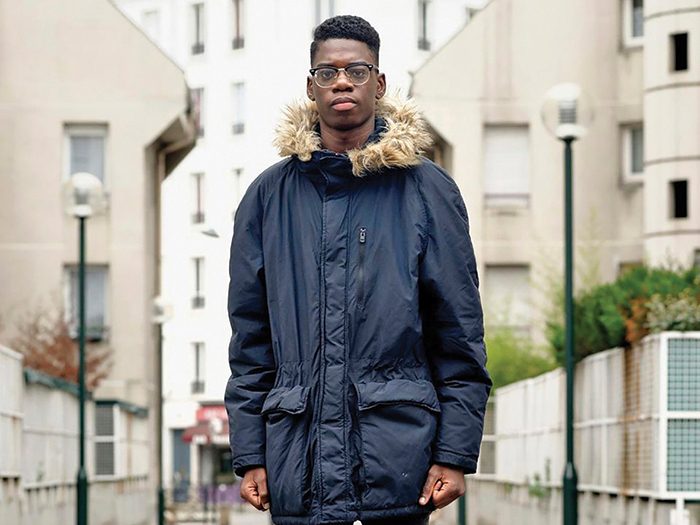
Youth saves child from blazing car
Heroes Teenager Emmanuel Toula (pictured) was taking part in a protest against racism in a Paris suburb when things turned violent. He saw a car that had been set on fire and realized there was a small child inside.
Thinking of his own younger siblings, he rushed to pull the six-year-old girl from the car, risking his own life.
“I was afraid, because I thought the car could explode at any moment,” he says. “I took the little girl in my arms, still trembling, and then I tried to run. I have four little brothers and two little sisters: I thought I could not leave a little one like that.”
The French police have hailed Emmanuel’s courage, but he remains modest. “I’m not a hero,” he insists. “I’m a big brother who thought of his little sister despite the fear.”
Sources: History: The Guardian, 26.2.17. Environment: The Guardian, 16.1.17. Animals: The Local (Spain), 17.3.17. Heroes: Metro, 12.2.17
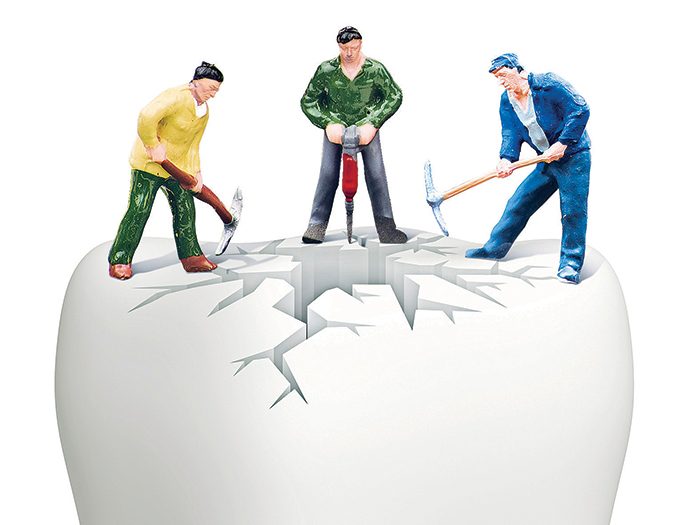
I’ve always been diligent about brushing my teeth at least twice a day. (Who doesn’t love a minty-fresh smile?) But six or seven years ago, I learned that my technique was sorely lacking. I tended to rush through the job, scrubbing furiously, and after decades of overly vigorous cleaning, my teeth had developed an uncomfortable sensitivity to heat and cold. My dental hygienist explained that the enamel, or protective layer, was wearing thin and exposing the more sensitive dentine underneath. Among her suggestions: brush gently up and down rather than aggressively, and take your time—at least two minutes.
“It’s a very typical example,” says Dr. Euan Swan, manager of dental programs at the Canadian Dental Association. “A patient is proud of the fact that they’re brushing so hard, but they’re damaging their teeth.”
When we first develop habits to improve our well-being, we aren’t always aware of the problems they could cause for our pearly whites. “Teeth tend to be a lower priority in terms of health, so some things tend to get missed,” says Dr. Mark Parhar, an endodontist in British Columbia, Canada, who specializes in the soft inner tissues of the teeth. Here are seven healthy practices that could be trashing your teeth—and how to stop the damage.
1. Brushing After You Eat
Does your morning routine include grabbing a toothbrush immediately after breakfast? Kudos to you for brushing regularly, but your timing needs tweaking. When you consume something acidic, like oranges or tomatoes, the enamel temporarily softens and becomes susceptible to abrasive wear. If you brush your teeth, especially forcefully, you can remove enamel, which will leave your chompers feeling sensitive. It gets worse as you get older, since your gums tend to recede with age and expose more root surface. (Tooth roots aren’t covered by enamel, but rather a thinner layer of a substance called cementum.)
If you want to exercise caution, wait approximately 30 minutes to brush. “Saliva is a buffering agent and will bring the acidity of the oral environment down, but it takes time,” says Gerry (Geraldine) Cool, a dental hygienist in Alberta, Canada and the president of the Canadian Dental Hygienists Association. Eating some types of dairy, especially cheddar cheese, can raise the pH inside the mouth and release calcium and other substances that fight plaque; and rinsing your mouth with water can help wash away debris wedged between teeth. You can also brush before eating something acidic instead of after.
2. Medication which causes Dry Mouth
You may be diligent about controlling a chronic health condition by taking prescribed medications as directed. Unfortunately, if you’re on any one or more of the hundreds of drugs—including certain antidepressants and pain meds—that have the side effect of reducing saliva flow, your oral health could suffer. “Patients on those medications tend to have a dry mouth, so they’re at a higher risk of developing tooth decay,” says Swan, “because the saliva isn’t there to physically wash food debris away or buffer acids.”
The solution isn’t to stop your medication, unless your doctor can offer an alternative without that side effect. Instead, try sipping water throughout the day. You can increase saliva flow with sugarless gum, mints containing xylitol, or sprays, gels and tablets designed specifically for dry mouth.
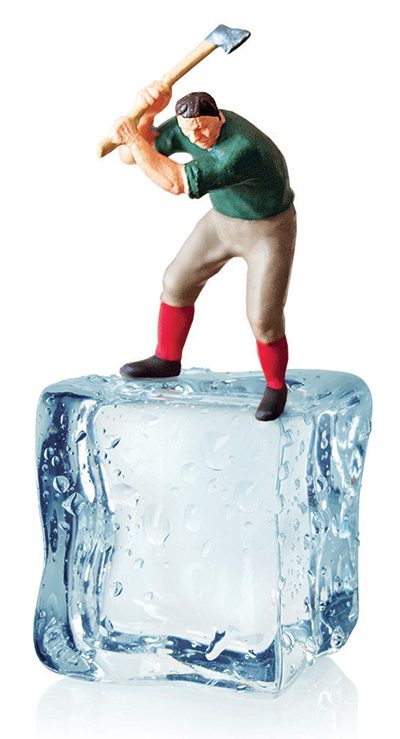
3. Exercising Without Dental Protection
There are many ways physical activity benefits your body. It helps with cardiovascular health, weight control and mood management, for starters. Participating in impact sports such as ice hockey or martial arts, however, can do a number on your teeth if they aren’t properly protected. A custom mouthguard (fitted by a dentist) provides a cushion around your teeth in case of an impact to the face. They can be invaluable when there’s a risk of physical contact, whether on the rink or on the basketball court.
“When you don’t wear a mouthguard, you see teeth chipping or being knocked out—damage that requires a lot of work to repair,” says Parhar, who has a background in sports dentistry.
Intense exercise may also affect the quantity and quality of your saliva. A 2015 study of triathletes in The Scandinavian Journal of Medicine & Science in Sports showed that when the athletes were active, their saliva flow slowed down while pH went up. Both changes can have a negative impact on teeth, which suggests that anyone active in sports should practise meticulous oral hygiene and seek regular dental care.
4. Drinking Lemon Water
Swigging water with fresh lemon juice is said to help digestion, strengthen immunity and cleanse your body of toxins. “I find it nice as a hot drink in the morning, especially when it’s cold out,” says 64-year-old Christine Peets of Ontario, Canada, who drinks lemon water throughout the day to calm her digestive issues and stay hydrated.
She became concerned, though, after a relative—also a fan of the drink—discovered it was weakening her tooth enamel, so Peets checked with her dental hygienist. Lemon water may be a popular trend, but acidic fruit juice is a major culprit when it comes to dental erosion from diet. “Even though you’re diluting lemon juice with water, you’re still raising the acid level of the mouth. If you sip, and you’re doing that two or three times throughout the day over a prolonged period of time, I’d be concerned,” says Cool.
Peets’s hygienist warned her to delay brushing right away after consuming lemon water, and also recommended trying toothpaste for sensitive teeth and brushing less forcefully. Drinking quickly is not a full fix, but it’s much better than sipping the tart mixture at length; using a straw may also lessen detrimental effects. Check that the water isn’t too hot, as warmer temperatures intensify the tooth damage. And if you’re going to drink the acidic beverage, Cool suggests having a drink of plain, ordinary water soon afterwards.
5. Chewing on Ice
Ice is free of calories and sugar, will cool you down on a hot day, is usually pH-neutral and won’t stick to your teeth. Isn’t crunching ice much more wholesome, therefore, than chewing on candy? Turns out it has its downsides. “Ice is very hard,” says Dr. Hendrike van Drie, a periodontist in Maastricht, the Netherlands, and chair of the oral-health working group at the Council of European Dentists. “Chewing on it damages teeth by causing cracks and fractures in enamel and restorations.” Van Drie adds that constant exposure to cold temperatures can lead to dentine hypersensitivity.
“I’ve got a few ice chewers in my practice, and I’m always encouraging them to break that habit. You just don’t want to crunch hard things,” says Cool. “The enamel is probably the hardest tissue in our bodies, but when there’s chronic wear and tear, there’s an increased chance that it can flatten the contours of the teeth.” Sometimes the wear is severe enough to change the way the bite fits together, triggering pain in jaw muscles. She says ice can be nice, but only if you let it melt in your mouth.
6. Sipping Wine Slowly
It’s true that alcohol in moderation may offer benefits, including reducing the risk of diabetes, heart attack or stroke. Red wine, in particular, contains compounds that seem to raise good cholesterol and boost your heart health. But if spreading out your drinking means you’re nursing a single glass of wine for two hours, your teeth are being constantly compromised.
It’s similar to the problem with lemon water. “Sipping wine means an exposure to acid every time a sip is taken,” van Drie says. That’s not to say you should chug-a-lug, but do drink water when you’re having a glass of wine, or nibble on a piece of cheese to buffer the acid. And note that not all wines pose the same problems for your teeth. “White wine has a higher pH and causes more and faster damage,” says van Drie. On the other hand, red can stain your pearly whites. Thinking of switching to carbonated water instead? “Sparkling water is also acidic and can harm teeth when drunk constantly.”
7. Opting for Spring Water
According to Statistics Canada, approximately one in five Canadian households turns to bottles instead of taps as the main source of drinking water. Certainly, water is a much better go-to beverage than sugary pop or juice, but if bottled spring water is the only kind you drink, you might be missing out on a potential 25 per cent reduction in tooth decay.
Fluoridated tap water is endorsed by health organizations such as the World Health Organization. It’s well proven to reduce tooth decay in both children and adults; it’s cost-effective; and it’s safe (levels are low and monitored, and it’s impossible to drink enough tap water to reach fluoride toxicity).
“When you drink fluoridated water, it gets into your system, so your saliva has a low level of fluoride in it that’s constantly benefiting your teeth,” says Swan. It’s especially protective for older people with exposed root surface that’s more vulnerable to decay.
Try to drink at least some tap water every day—you can use filters, as long as they’re not the type that removes fluoride. If you’re in a rural area, have your water tested to find out its mineral composition and then adjust as needed.